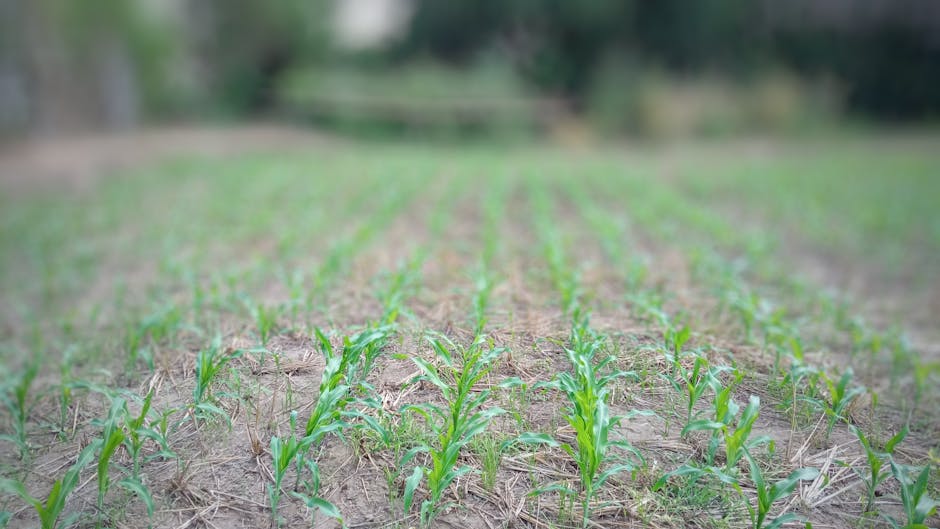
Understanding Corn Seedling Blight: A Guide to Healthy Maize
If your corn plants are showing signs of distress, such as wilting or discoloration, you might be dealing with seedling blight, also known as damping off. This frustrating fungal disease can devastate young corn plants, but with the right knowledge and preventive measures, you can protect your crop. In this comprehensive guide, we’ll explore what corn seedling blight is, its causes, how it affects plants at different growth stages, and most importantly, how to prevent it.
What Is Corn Seedling Blight?
Corn seedling blight is a fungal disease that attacks seeds and young plants, leading to rot and death. Often referred to interchangeably as damping off, seed rot, or root rot, this disease can manifest at various stages of a plant’s early growth. The specific name may depend on when the infection occurs:
- Seed Rot: When a seed rots before sprouting roots.
- Root Rot: When a seed sprouts roots but dies underground.
- Damping Off: When a seedling emerges from the soil and then collapses due to infection.
- Seedling Blight: Typically refers to the death of slightly older seedlings due to fungal infection.
While the terminology can be confusing, the underlying cause remains the same: pathogenic fungi that target vulnerable young plants. Our focus here is on seedling blight affecting corn in its early growth stages.
When Does Seedling Blight Affect Corn?
Corn is considered a seedling during the first three to four weeks after germination and emergence from the soil. As a monocot in the grass family (Poaceae), corn begins growth by producing a radicle (the primary root) and a coleoptile (a protective sheath for the first leaf). By 10 to 14 days post-emergence, you should see two to three leaves, and by three to four weeks, six to eight leaves should be visible as the plant approaches its reproductive stage.
Seedling blight can strike at any point during these early stages, with corn plants being most vulnerable between germination and emergence. Pathogens may attack underground seeds or target the roots and stem base of emerged seedlings. Let’s break down how blight impacts corn at different stages:
Pre-Emergence
Some seeds germinate but succumb to blight before breaking through the soil. In soil temperatures of 50-55°F, seedlings should emerge within three weeks. Warmer soils speed up germination. If emergence takes longer, dig up a seed to check for pre-emergence blight. Infected seeds often show wet, discolored, or rotted roots, or a fuzzy, moldy appearance on the seed itself.
Post-Emergence
Post-emergence blight affects seedlings that have emerged from the soil. Symptoms may appear immediately or after the plant grows a few true leaves, depending on environmental conditions that favor fungal growth. Infected seedlings typically exhibit water-soaked, soft, or discolored bases and roots, while aboveground parts turn yellow and wilt.
Mature Plants
Even if a corn plant survives seedling blight, the damage can linger. Mature plants may display stunted growth or weakened root systems, making them more susceptible to other issues throughout the growing season. A mild infection during the seedling stage can hinder the plant’s ability to thrive later on.
What Causes Corn Seedling Blight?
The primary culprits behind corn seedling blight are soil-borne fungi from genera such as Diplodia, Fusarium, Penicillium, Pythium, and Rhizoctonia. These pathogens coexist with beneficial soil microorganisms but become problematic under certain conditions. After germination, seedlings release substances that signal their presence to nearby fungi. If the soil is too cold, overly wet, or both, these pathogens thrive, attacking through roots or small wounds in the plant tissue.
The fungi release enzymes that break down plant tissue, causing rot and eventual death. Identifying the specific fungal species without lab testing (often through a local extension office) can be challenging. Other contributing factors include:
- Poor-quality seeds that harbor fungi.
- Planting depth that delays emergence.
- Seed injuries or cracks that allow fungal entry.
- Poor soil quality or drainage issues.
- Herbicide injury that weakens plants.
How to Prevent Corn Seedling Blight
Once a plant is infected with seedling blight, recovery is unlikely, making prevention critical. Here are actionable steps to protect your corn crop:
- Use Treated Seeds: Purchase seeds treated with fungicide for added protection against soil-borne pathogens.
- Plant Shallowly: Sow seeds 1-2 inches deep to encourage quicker emergence, reducing the window of vulnerability to fungi. Shallow planting allows photosynthesis to begin sooner, supporting faster growth.
- Inspect Seeds: Check seeds for cracks or damage before planting, as these can serve as entry points for pathogens.
- Ensure Quality Soil: Plant in well-draining, high-quality soil to avoid waterlogging, which fosters fungal growth.
- Monitor and Act Quickly: If you suspect blight, remove affected seedlings immediately. Treat surrounding plants with copper fungicide to prevent the spread of infection.
By implementing these preventive measures, you can significantly reduce the risk of seedling blight and promote healthy maize growth.
Healthy Seedlings, Happy Maize
Armed with an understanding of corn seedling blight’s causes, symptoms, and prevention strategies, you can plant your maize with confidence. Protecting your crop from fungal diseases early on sets the stage for a successful harvest, whether you’re growing sweet corn for juicy cobs or varieties for homegrown popcorn.
Have you faced challenges with seedling blight or other issues in your young corn plants? Share your experiences or ask questions in the comments below! For more tips on growing robust corn, explore our additional guides on corn care and cultivation.







